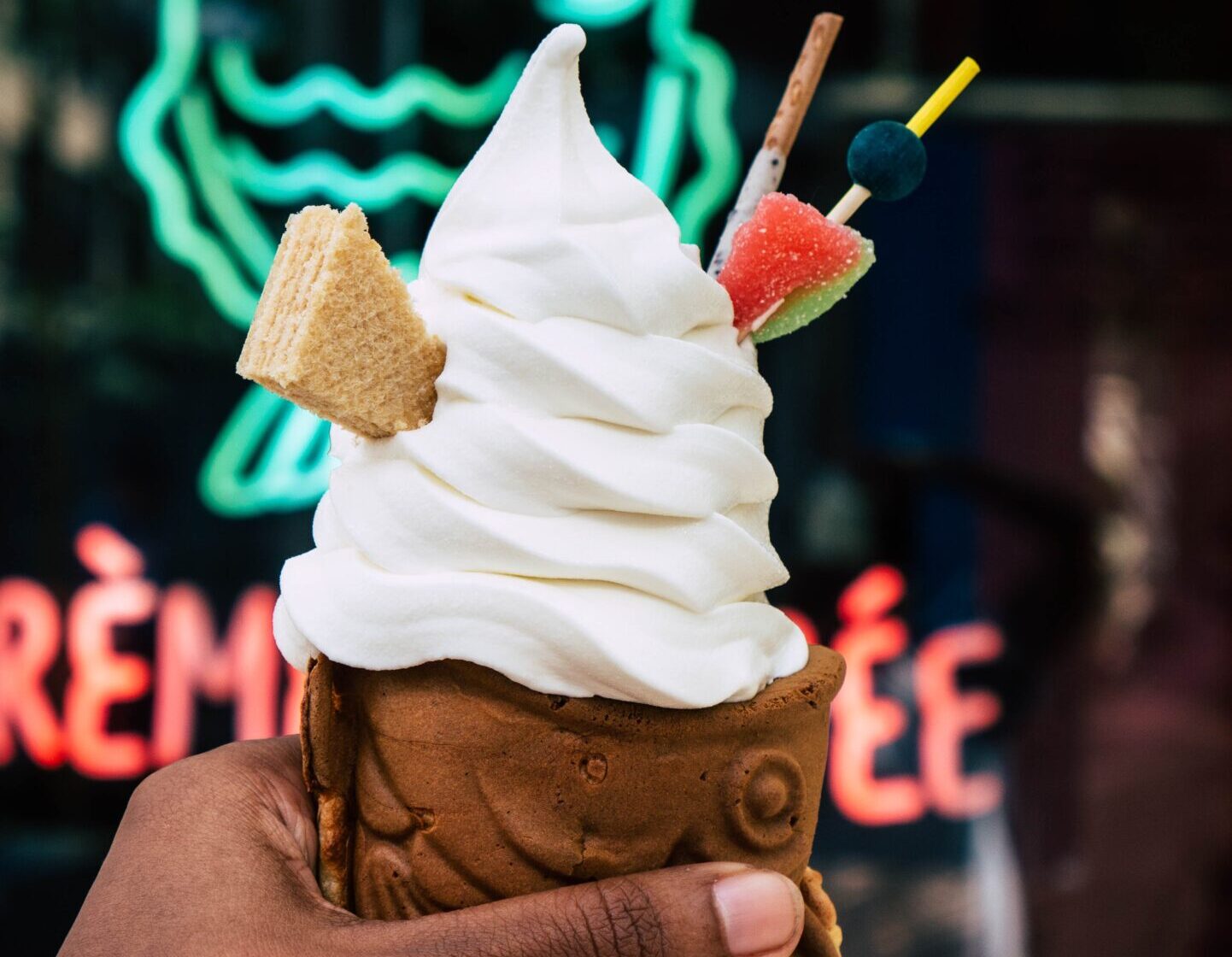
Mao Goto is a Japanese freelancer who was born in Hayama, Kanagawa prefecture, and raised in Tokyo. Since 2016 she lives in the Taito Ward, home to a lot of Japanese culture hotspots such as Asakusa, Akihabara, and Ueno. She has been interested in the field of English education in Japan and got her Master’s degree in March 2020. A lover of photography, travel, sweets, and cross-stitch. Contact her via Facebook.
This post may contain some affiliate links. When you click through and make a purchase we may receive some commission, at no extra cost to you.
Kyoto is seemingly the center of Japan’s Japanese culture with its huge amount of traditional experiences. As the ancient capital of Japan, it flourished as the imperial capital for centuries and is a place of Japanese culture and traditions in depth. Its beautiful scenery and historical buildings attract many visitors year round. A trip to Kyoto’s World Heritage sites provides an excellent opportunity to experience Japan’s rich history and traditions. The UNESCO World Heritage sites are each impressive in their own right, offering a moving experience of the beauty of its traditional architecture. So what buildings in Kyoto are registered as World Heritage sites? In this article, we will introduce some of the most extraordinary UNESCO sites in Kyoto!
Special offer going on now!
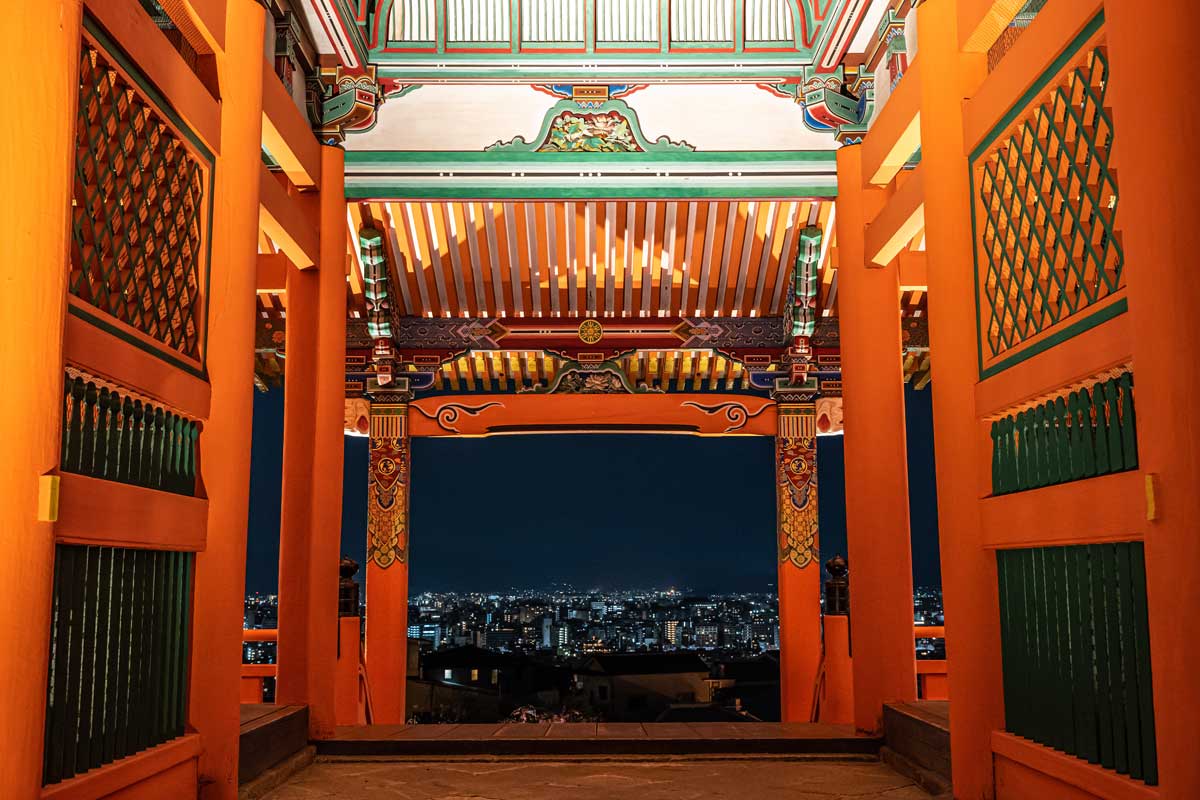
Before we get into the UNESCO sites, we’d like to introduce a limited time, special opportunity that you wont want to miss, and may want to include!
If you’re a huge fan of Japan’s incredible display of cherry blossoms, known in Japanese as “sakura,” then you’re in luck! A handful of temples in Kyoto are offering a special chance to enter the grounds before operating hours to see the beautiful foliage. This is the perfect opportunity to see the temples in their glory as well as avoid potentially dense crowds as the spots are limited. The luxurious Kyoto Brighton Hotel line offers these immaculate experiences for those staying at the hotel as an add on to the room fee, but can also be reserved as a package initially. The event operates from the 29th of March until the 8th of April!
For all the specifics, be sure to visit their official site and make your reservation while you can!
1. Kiyomizu temple
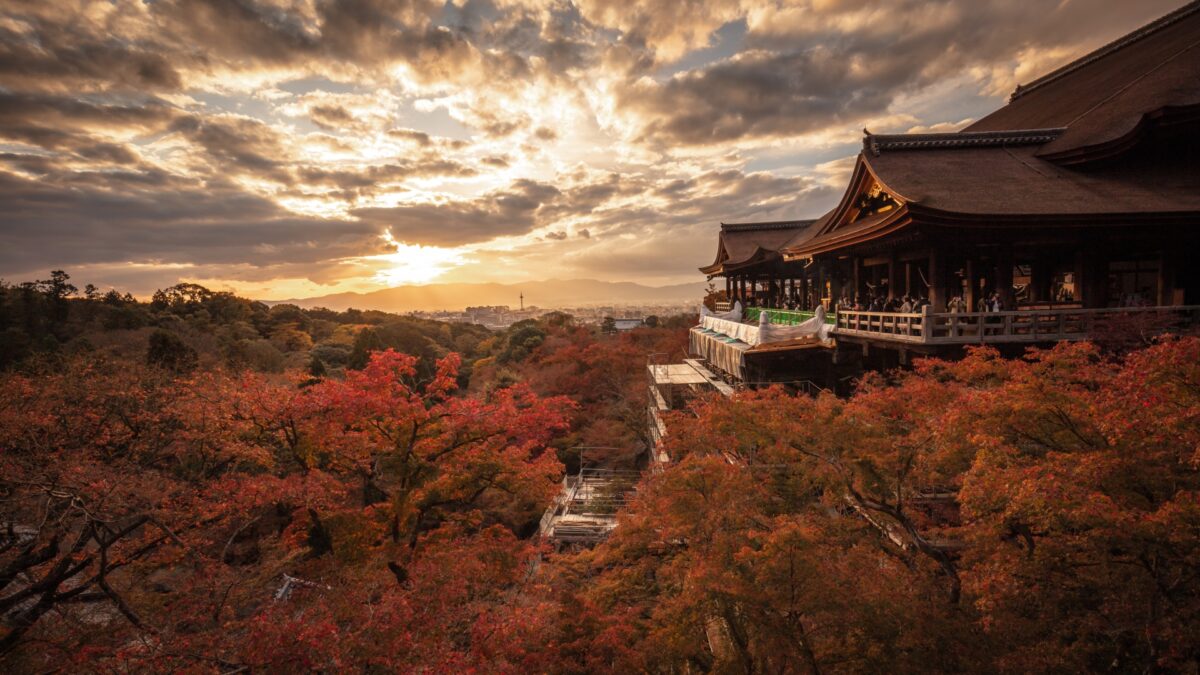
Kiyomizu Temple in Kyoto is a historic temple with a history of approximately 1,200 years and is an icon to Kyoto’s image. The “Kiyomizu-no-butai” (清水の舞台, stage of Kiyomizu) in particular is located on a precipitous cliff, giving it a powerful appearance as if it were floating in mid-air. There is also a waterfall called Otowa Falls within the precincts of Kiyomizu Temple. It is said that the water from this waterfall has never run dry, and drinking its pure water is believed to bring blessings such as the fulfillment of love, academic success, and longevity. Many people seek out the waterfall and drink it with their wishes in mind.
Official Website: Kiyomizu Temple
Open everyday: 6AM-6PM
Admission fee: ¥500
Experience the Kiyomizu temple on the following tour!
2. Byodo-In
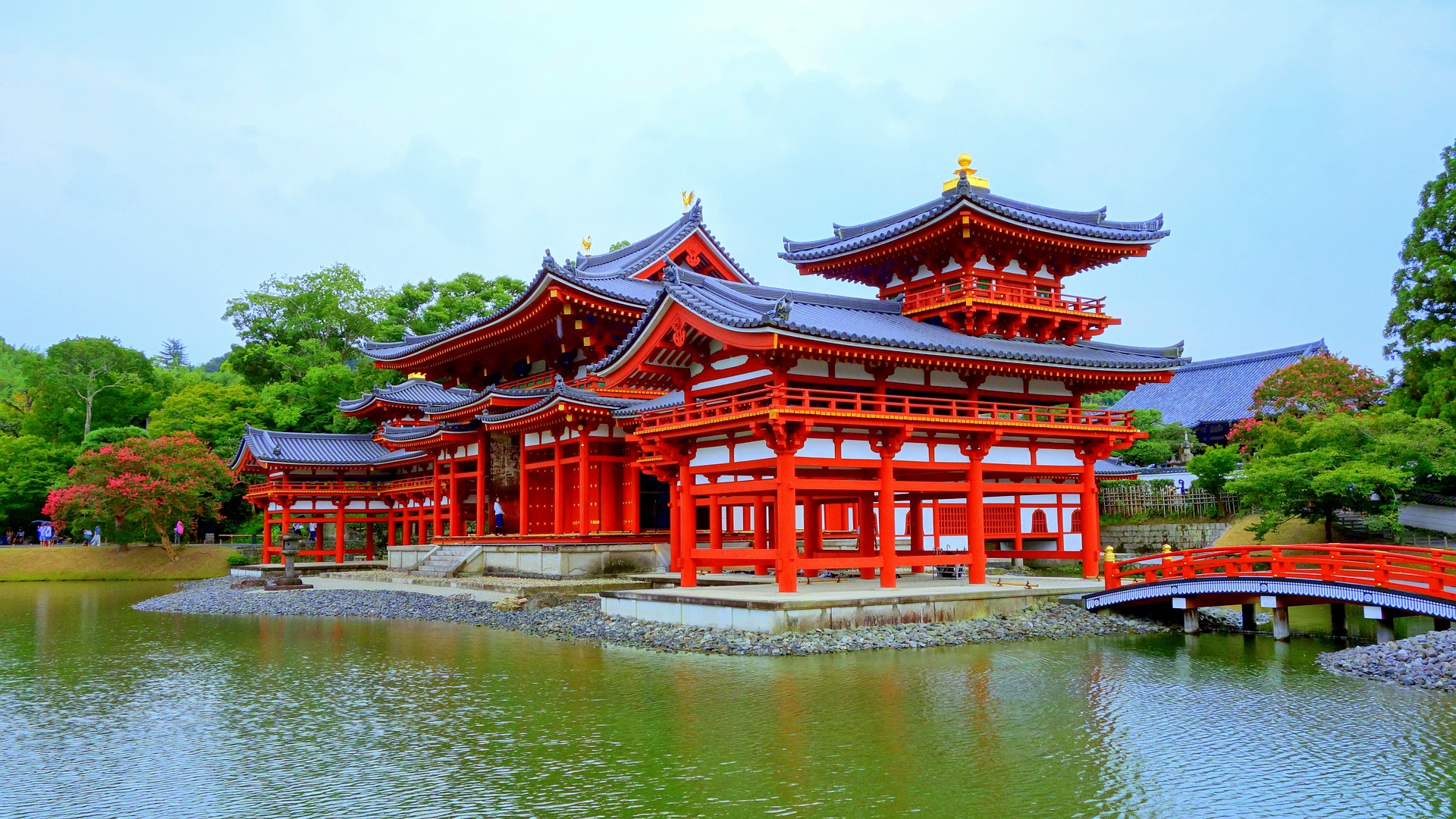
Next we will introduce Byodo-In, famous for the beautiful temple depicted on the reverse side of Japan’s 10-yen coin. Byodoin is an Amida Hall built by Fujiwara no Yorimichi in 1053 during the late Heian period. Byodo-In’s most splendid feature is the Phoenix Hall, which was built to stand on the middle island of a pond, creating a beautiful reflection in the water, like a palace floating in the Treasure Pond of Paradise. Depicted on Japanese coins, the Phoenix Hall is the iconic building of Byodoin and symbolizes the beautiful scenery and traditions of Japan.
Official Website: Byodo-in
Open everyday: 8:30AM-5:30PM
Addmission fee: ¥700
See the Byodo-in on this tour!
3. Ujigami Shrine

Ujigami Shrine in Uji is another recommended UNESCO site for a trip to Kyoto. The worship hall is made of cypress wood cut in the early Kamakura period and is highly regarded as an extremely valuable historical building. Uji Shrine, located nearby on foot, is also a must-visit place. This shrine was built in the Meiji era and is known for its connection to rabbits. Statues of rabbits are erected everywhere, and their adorable appearance soothes the hearts of visitors. Be sure to enjoy green tea while in the area, Uji is the most famous place for it!
Official website: https://www.ujikamijinja.jp/
Open everyday: 9AM-4PM
Admission fee: free
4. Hieizan Enryakuji temple
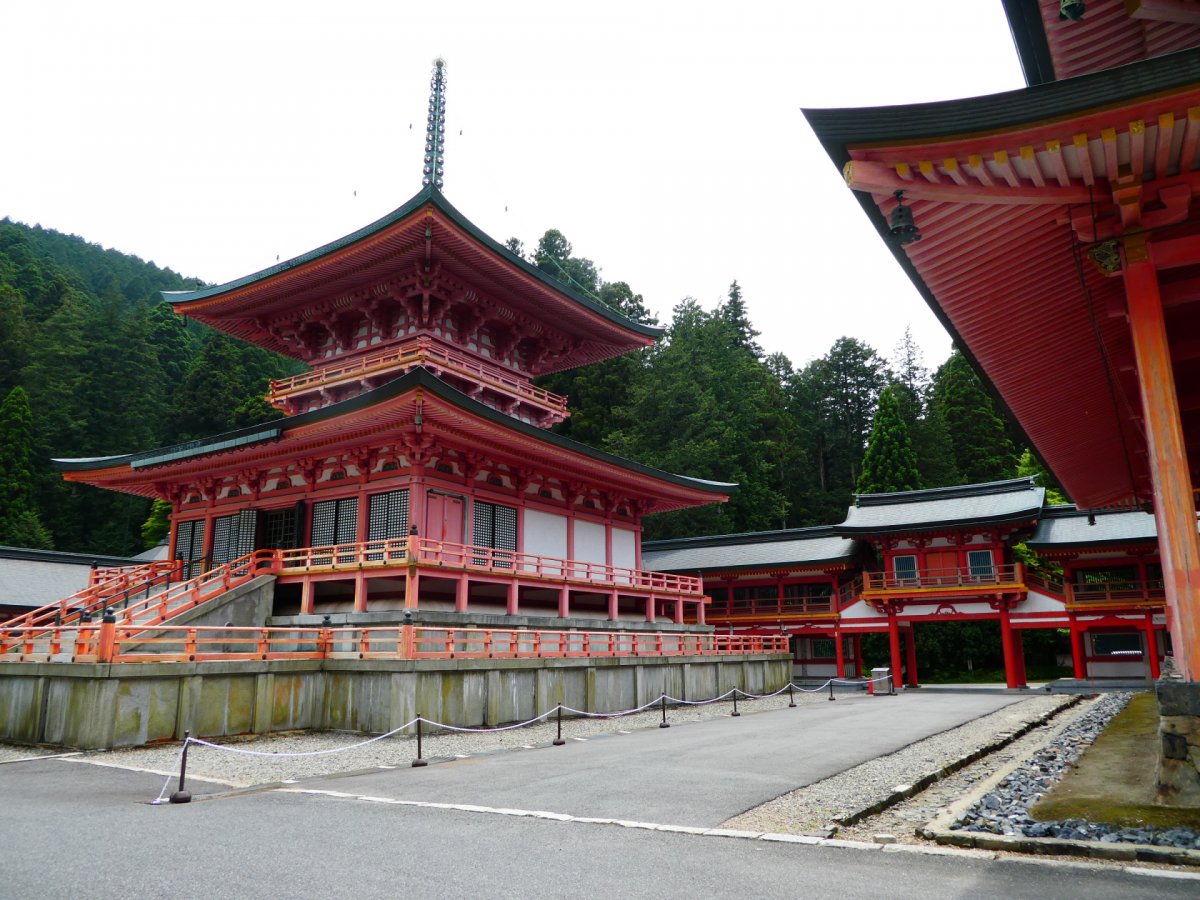
Hieizan Enryakuji Temple is known as the mother mountain of Buddhism in Japan, and the entire 848-meter-high Mount Hiei is within the temple’s boundaries. Located on the border between Kyoto and Shiga prefectures, the temple offers beautiful views of Lake Biwa, the largest lake in Japan, especially from the eastern side. Hieizan Enryakuji Temple is also known as an important place in Japanese history: in 1571, the temple was burned down due to a feud with Oda Nobunaga. This historical background gives visitors a sense of the solemnity and weight of this temple. The temple grounds are a place of tranquility and beauty, a place of spiritual refreshment that attracts many worshippers and tourists. You will be deeply moved by the teachings and beauty of Japanese Buddhism.
Official Website: Hieizan Enryakuji Temple
Open everyday: 9AM-4PM
Admission fee: ¥1,000
You get to see the Hieizan Enryakuji temple on this tour!
5. Nijo-jo
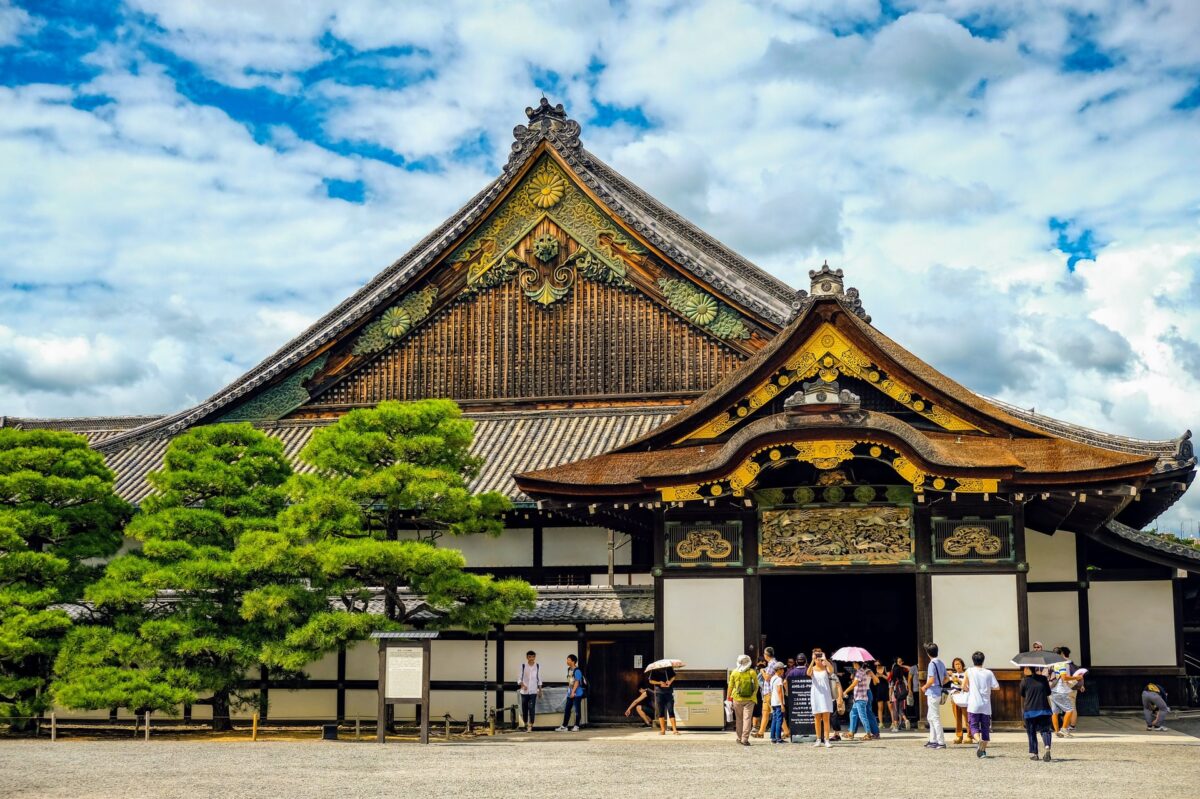
If you want to experience the history and beauty of Japan, visiting Nijo Castle should be added to your itinerary. This castle was built in 1603 by Tokugawa Ieyasu, the first shogun of the Edo shogunate, to protect the Kyoto Imperial Palace as the residence of the Emperor and to serve as an accommodation for shoguns traveling to Kyoto. It is also known as the place where the last shogun of the Edo period, Yoshinobu Tokugawa, made his restoration of Imperial Rules (大政奉還). The historical significance of this place can be felt as well as its importance as a place where Japan’s past and future meet. A particular highlight is the Karamon Gate (唐門). It is the main gate of the Ninomaru Palace (二の丸御殿) and is covered with colorful carvings. Beautifully carved with pine, bamboo, plum, cranes, dragons, tigers, phoenixes, and other auspicious symbols, it captivates the viewer’s attention.
Official Website: Nijo-jo
Opening hours: 8:45AM-5PM
Admission fee: ¥800
Step into a dreamlike world during this Limited time spring event. During the “NAKED Meets Nijo-jo Castle” event, you will get to view 300 cherry trees combined with an immersive digital art experience.
Click here to get your tickets
Events happens everyday from 2025/3/14 to 2025/4/13, 18:00 – 22:00 (Last entry is 21:00).
6. Ryoanji
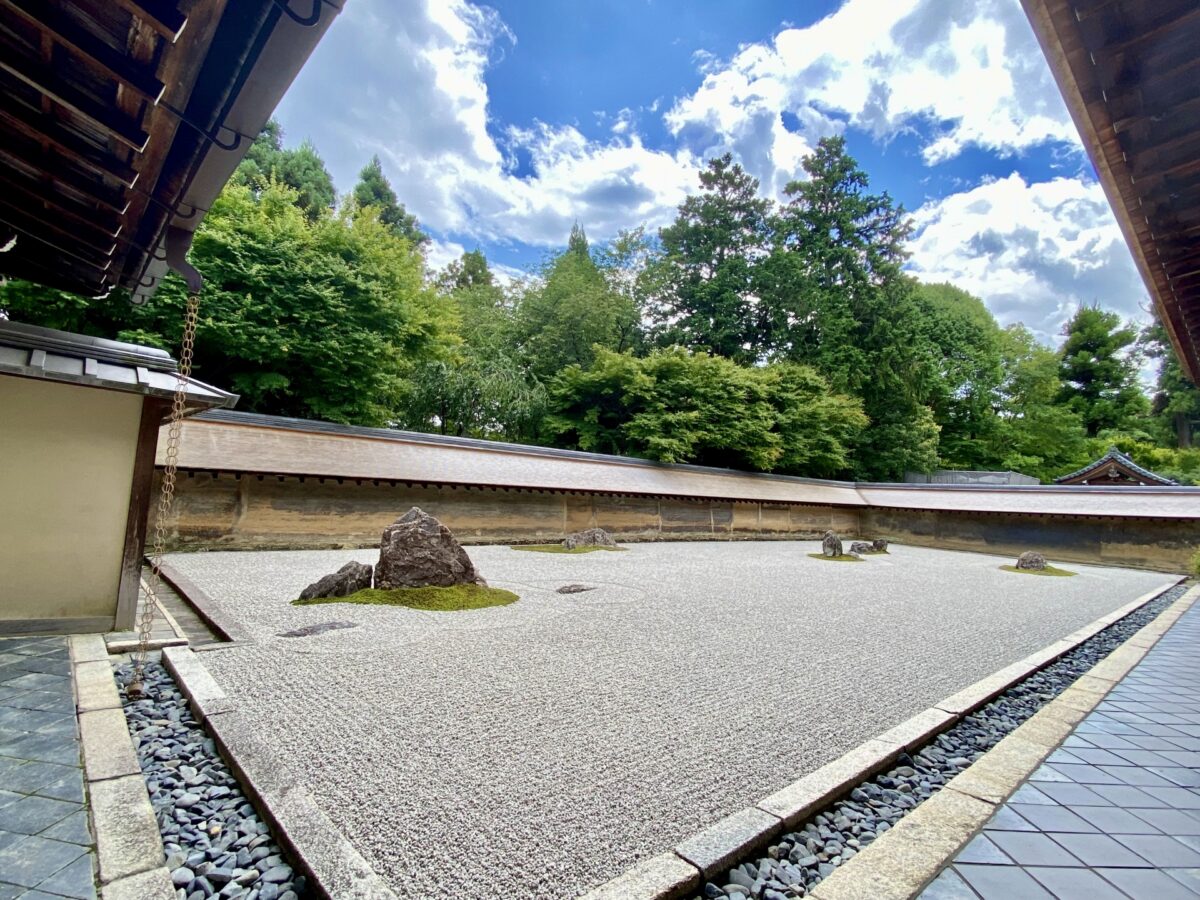
Ryoan-ji Temple is one of the most famous Zen temples in Kyoto. The temple was founded in 1450 by Hosokawa Katsumoto, a powerful figure in the Muromachi shogunate. The most famous feature of Ryoan-ji Temple is the world-famous “Karesansui” stone garden. It is a rectangular white sand garden measuring 30 meters from east to west and 10 meters from north to south, with 15 stones arranged in the shape of 5, 2, 3, 2, 2, 3. This garden attracts many visitors with its unique design that highlights the beauty of the stones themselves rather than the greenery.
Official Website: Ryoanji
Opening hours: 8AM-5PM
Admission fee: ¥600
7. Ninnaji
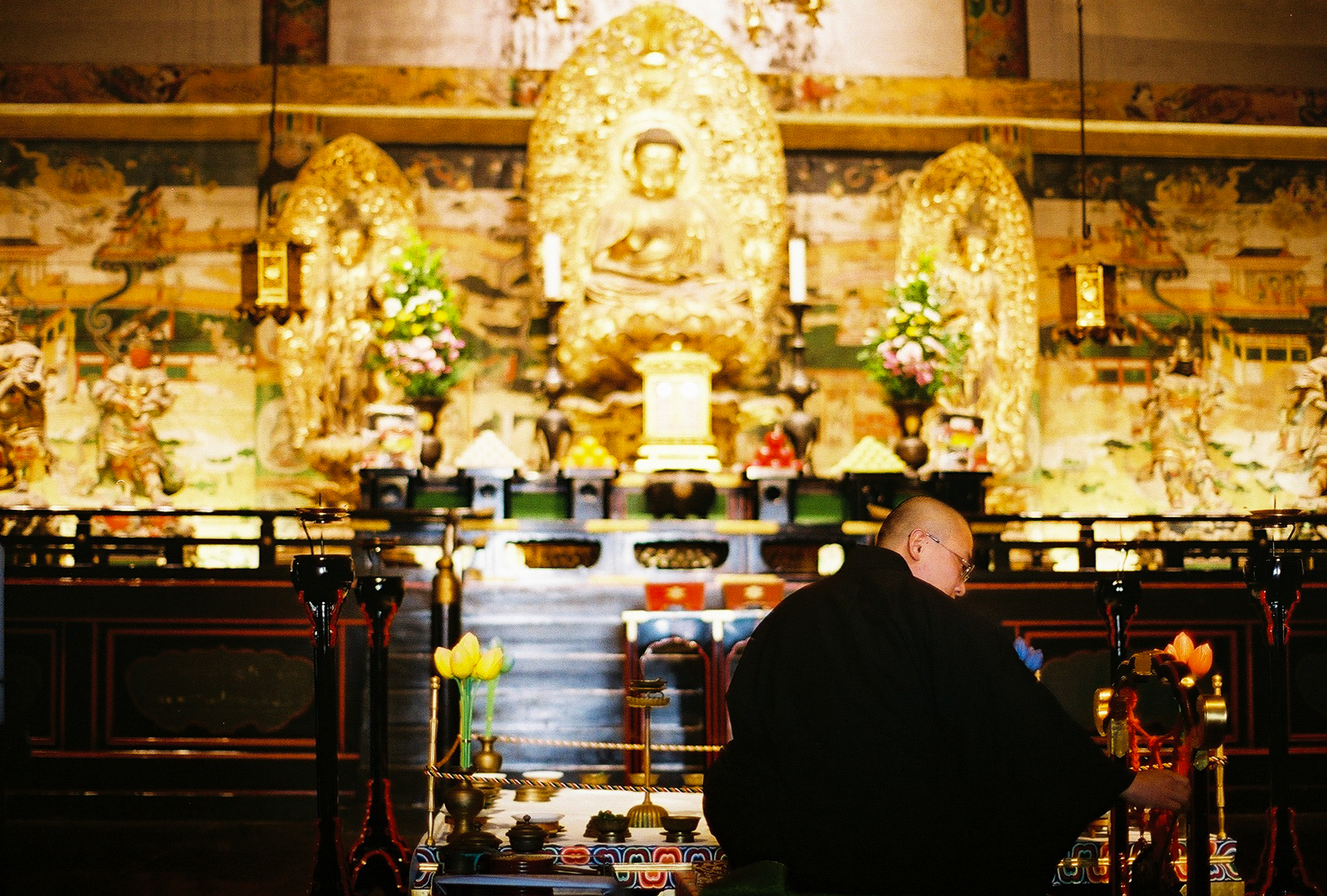
Ninna-ji Temple was founded in 888 and has a very old and venerable history. This is an important temple whose name appears in many classics. Representative works include “Tsurezuregusa (徒然草)” and “Hojoki (方丈記)” and you can see the cultural importance and aesthetic sense of Ninna-ji Temple, as its name is inscribed in these classics. The most beautiful moment at Ninna-ji Temple is during the Omuro-zakura season, when the cherry blossoms bloom late, which is said to be the best in Kyoto. In fact, literally, the best time to see the cherry blossoms is from mid to late April, when they bloom late. During this period, the temple is crowded with many cherry blossom-viewing visitors, who can enjoy the beauty of the elegant cherry blossoms.
Official Website: Ninnaji
Open everyday: 9AM-5PM
Admission fee: ¥800
8. Kinkakuji
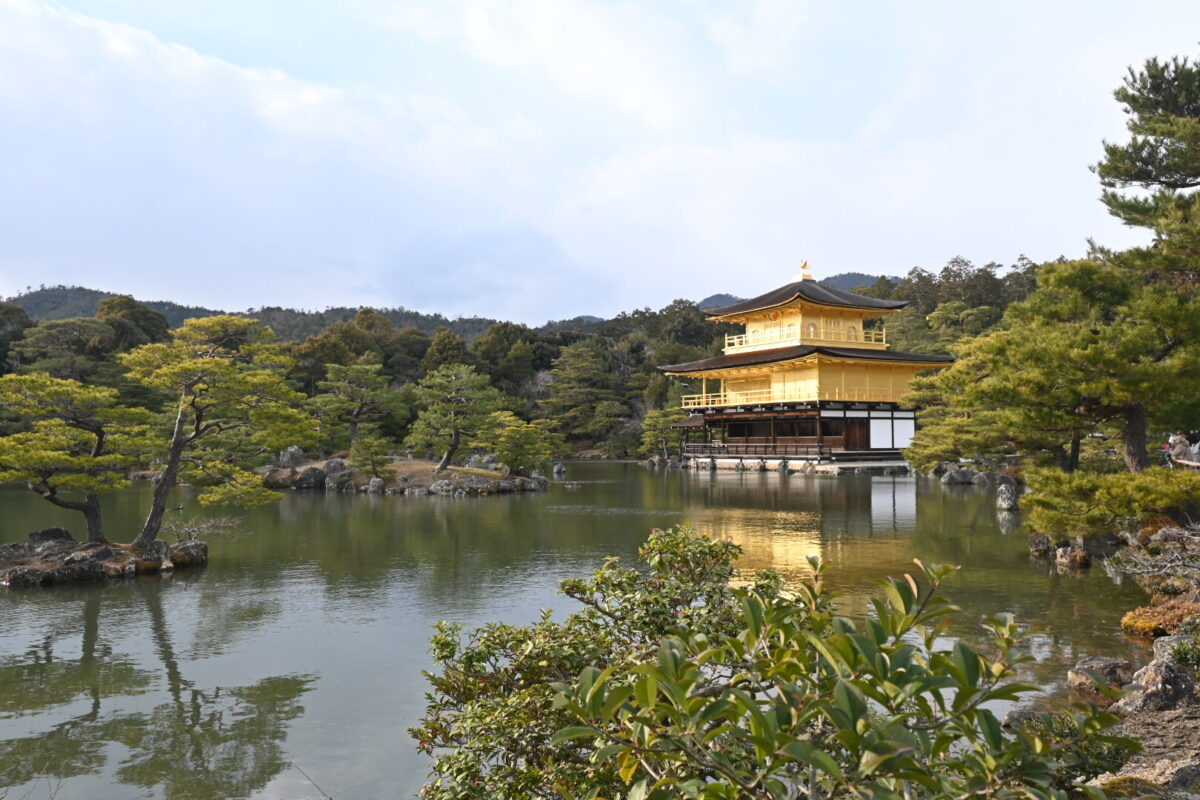
One of the most gorgeous temples in Kyoto is Kinkakuji. This golden temple was built by Ashikaga Yoshimitsu, the third shogun of the Muromachi Shogunate. The gardens and architecture around Kinkakuji Temple are said to represent the Pure Land of Paradise, symbolizing the cultural splendor of the Muromachi period. It is a place where one can catch a glimpse of the glory of those days and be overwhelmed by its beauty. Especially in winter, snow covers the surrounding mountains and the Kinkakuji Temple, creating a fantastic and beautiful scene.
Official Website: Kinkakuji
Opening hours: 9AM-5PM
Admission fee: ¥500
9. Ginkakuji
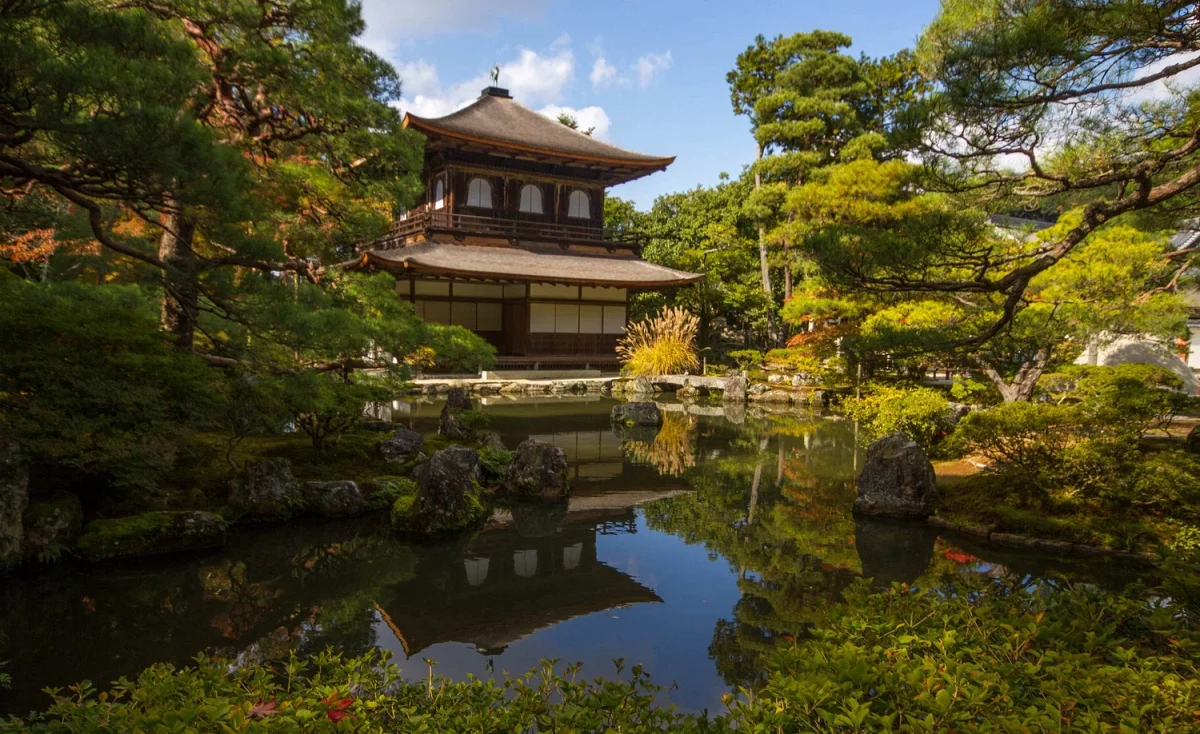
After visiting Kinkakuji Temple, a stop at Ginkakuji Temple is a must. Ashikaga Yoshimasa, the eighth shogun of the Muromachi Shogunate built this place and unlike Kinkaku-ji, Ginkaku-ji is characterized by its modest appearance based on the “wabi-sabi” spirit. In contrast to the opulence and splendor of Kinkakuji, Ginkakuji offers an understated beauty. The charm of Ginkakuji Temple is that it shows its beauty throughout the year. In spring, camellias, azaleas, and other flowers add color, and during the season of autumn leaves, the temple offers a colorful view. And in winter, the snowy landscape creates a fantastic scene.
Official Website: Ginkakuji
Open everyday: 8:30AM-5PM
Admission fee: ¥500
10. Tenryuji
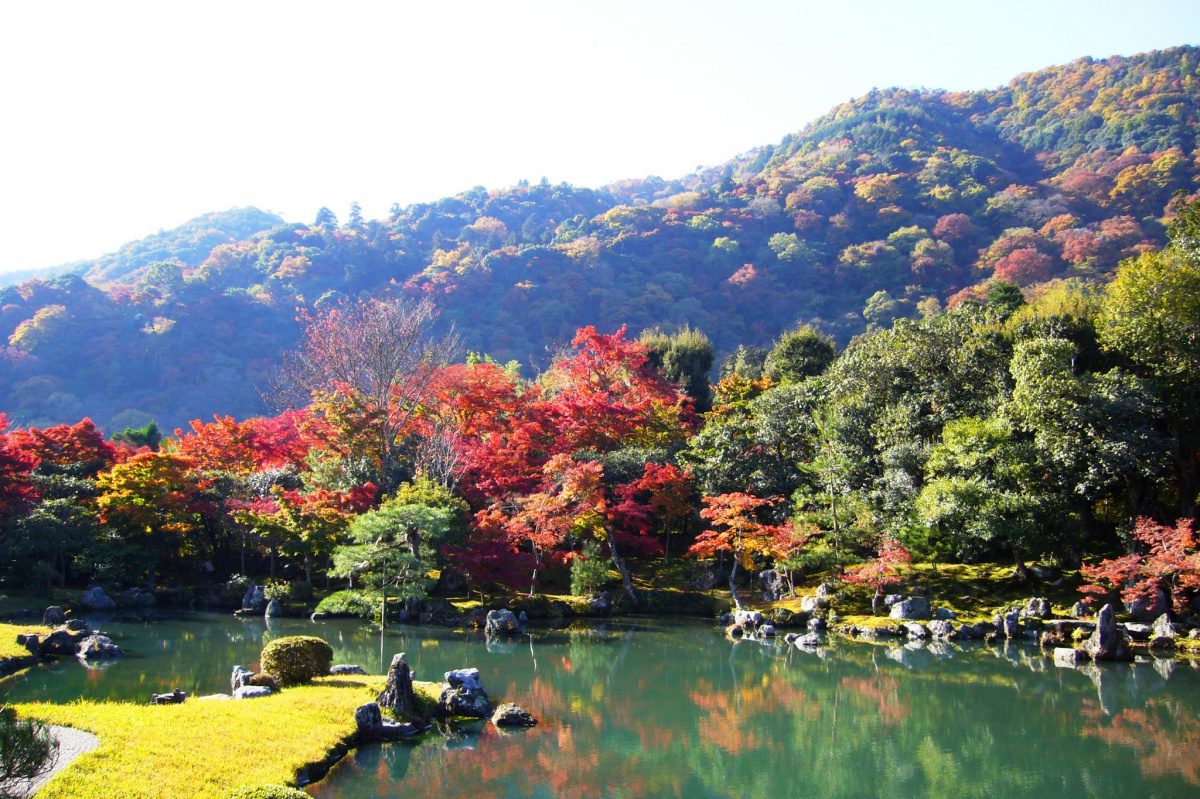
The last temple we will introduce is Tenryuji Temple, built in 1339 by Ashikaga Takauji. This temple is of the Rinzai sect of Buddhism and was built to comfort the soul of Emperor Godaigo. Tenryu-ji Temple has suffered from several major fires since its foundation, and its original grandeur was lost, but the present form was rebuilt in the Meiji era. The temple is a place where aristocratic and Zen cultures are beautifully fused together, and the Japanese-style garden on the temple grounds is a symbol of this fusion. Visitors can enjoy the beautifully landscaped natural beauty of the garden and feel the Japanese sense of beauty and spirit as they walk quietly through it.
Official Website: Tenryuji
Openig hours: 8:30-9PM
Admission fee: ¥800
In this article, we have gone over some breathtaking UNESCO World Heritage sites in Kyoto; did you find any place you want to visit? A trip to these World Heritage sites is not only a sightseeing trip, but also an opportunity to experience Japanese history and culture that will leave a deep impression on your heart. Enjoy your visit to these sites and hope your trip to the World Heritage Sites in Kyoto will be an experience filled with precious memories and emotions.
Japan Wonder Travel Tours in Kyoto
When you are visiting Kyoto and you need some help organizing your trip, you came to the right place. We’re happy to help you make your trip to Kyoto the best trip ever. We can advise you on where to go or even better, show you around with a local, English speaking guide. Let us help you create safe, comfortable, and unforgettable memories in Kyoto!
▶Kyoto 8h Private Custom Highlight Tour with Licensed Guide
On this full-day private tour of Kyoto, you will be able to see the highlights of Kyoto in just one day and at the same time develop a deeper understanding of both the culture of the area and Japan as a whole.
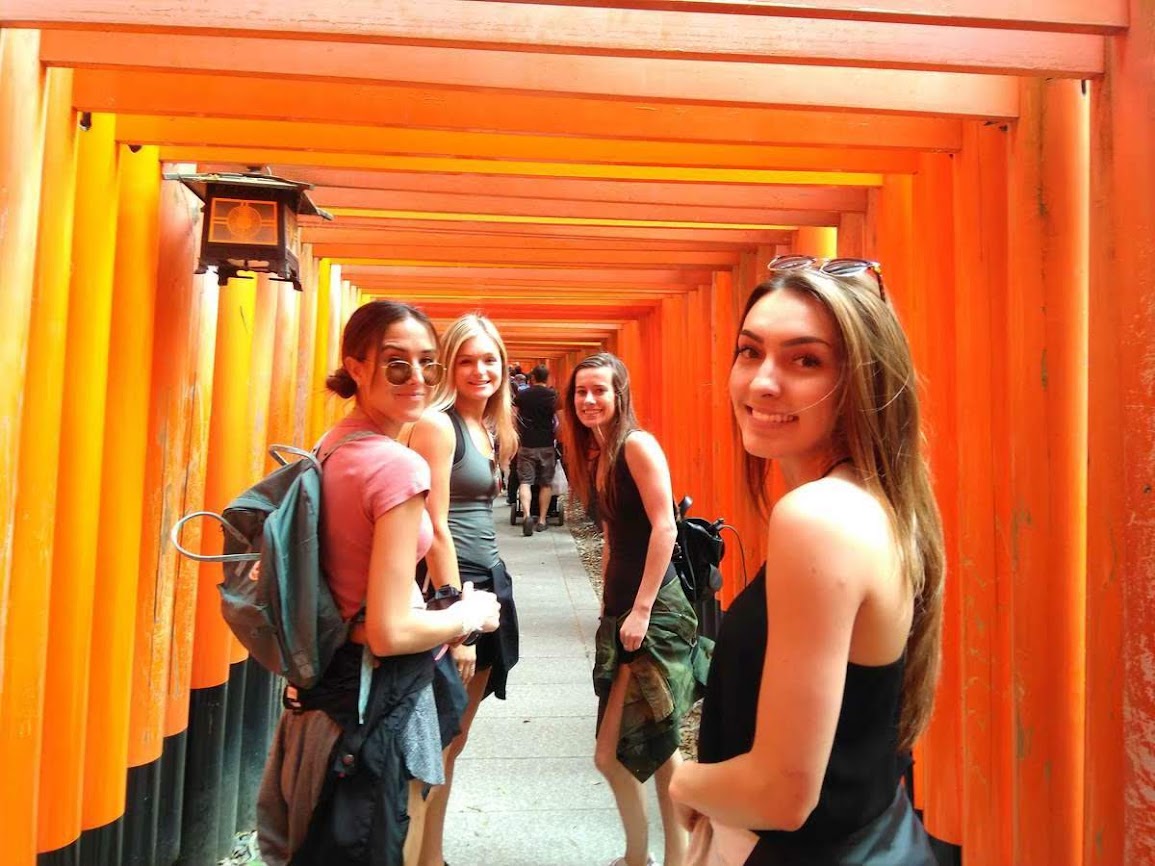
▶Meet a Geisha in Kyoto: Guided Walk in Gion and Enchanted Time with Maiko
Meet a Maiko, a geisha in Kyoto, and enjoy a walking tour in Gion, the geisha district. See an authentic Japanese tradition unfold before your eyes that has existed for hundreds of years. You’ll have chance to take a photo with Geisha!

▶Explore Nishiki Market: Food & Culture Walk
If you’re looking to learn more about the culture and the local cuisine of Kyoto, this is the perfect tour for you! Take part in this Kyoto food and drink tour and explore the 400-year-old market and the famous surrounding areas.

▶Kimono Experience
Kyoto is the best city to explore in kimono, Japanese traditional clothing. You can choose the one you like the most from several patterns and colors at the rental shop. In Kyoto, two locations are both accessible from the main tourist attractions which makes it easy to try it on and explore the city for a day!
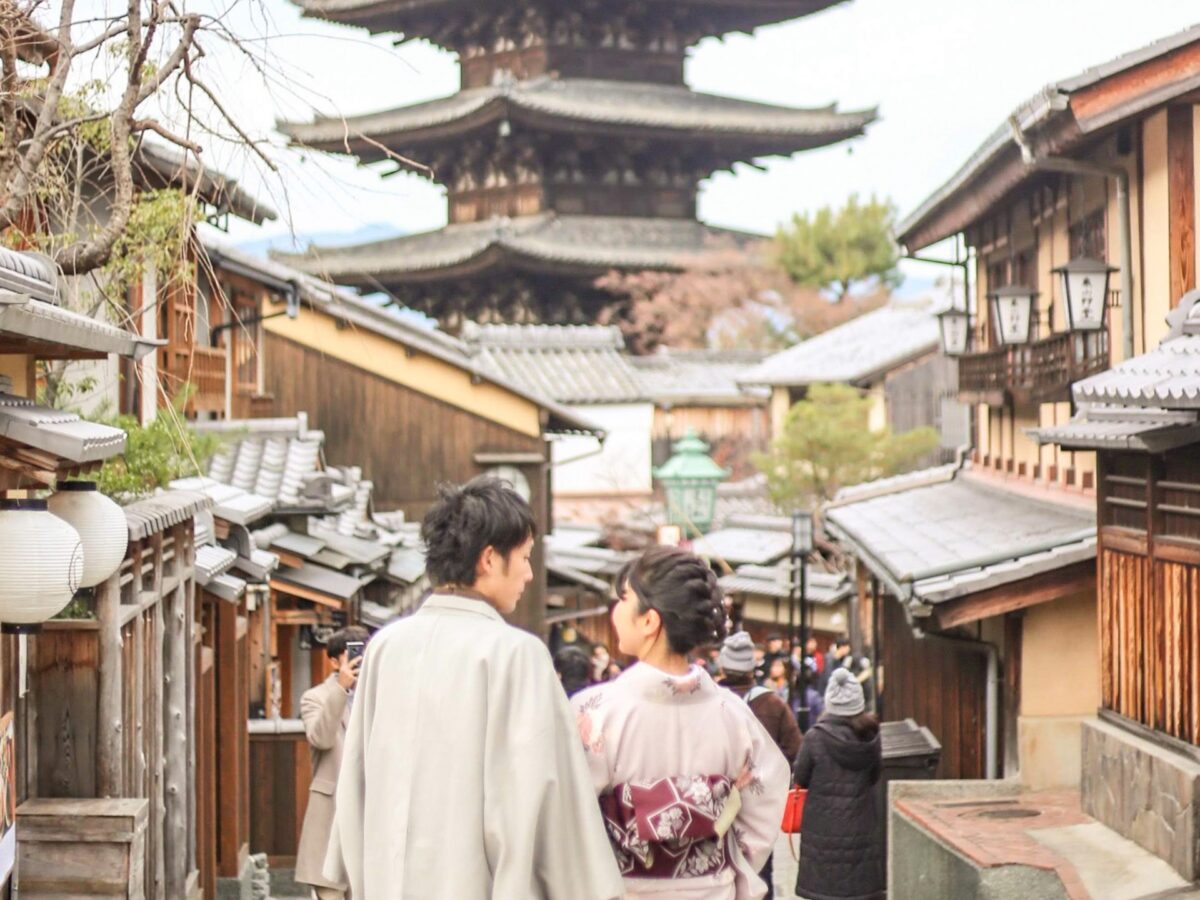
Follow us on Instagram, Facebook, Twitter, and TikTok for more travel inspiration. Or tag us to get featured!
Happy traveling!
Subscribe to our newsletter!

